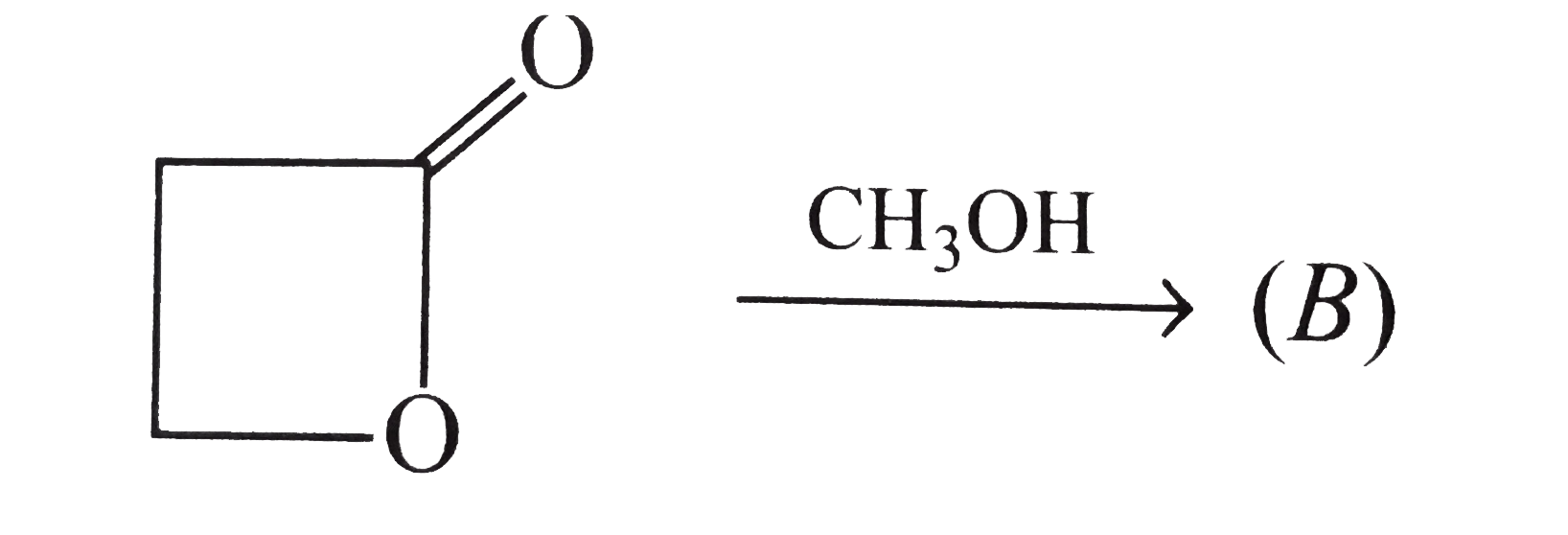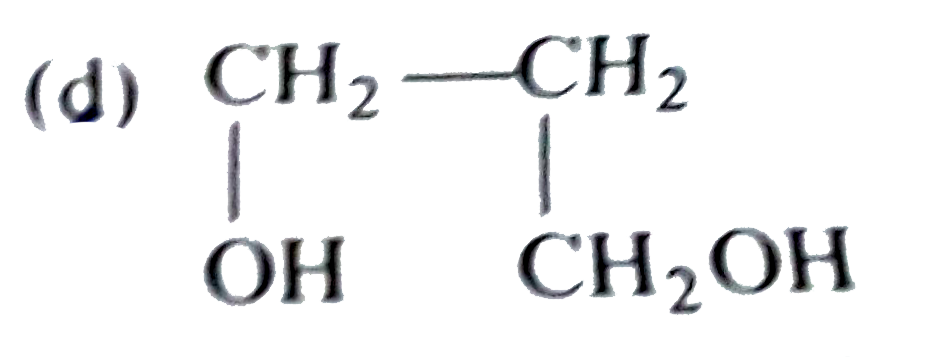Aldehydes react with one equivalent of monohydric alcohol in the presence of dry hydrogen chloride to yield alkoxyalcohol intermediate , known as hemiacetals, which further react with one more molecule of alcohol to give a gem - dialkoxy compound known as acetal. Ketones react with ethtlene glycol under similar conditions to form cyclic products known as ethylene glycol ketals. Dry hydrogen chloride protonates the oxygen of the carbonyl compounds and therefore, increases the electrophilicity of the carbonyl carbon facilitating the nucleophilic attack of ethylene glycol. Acetals and ketals are hydrolysed with aqueous mineral acids to yield corresponding aldehydes and ketones respectively.
Give the structure of ethylene glycol ketal
The following Structure are
Topper's Solved these Questions
- ALDEHYDES, KETONES AND CARBOXYLIC ACIDSBOOK - U-LIKE SERIESCHAPTER - ALDEHYDES, KETONES AND CARBOXYLIC ACIDSEXERCISE - MULTIPLE CHOICE QUESTIONS
19 Videos
- ALDEHYDES, KETONES AND CARBOXYLIC ACIDSBOOK - U-LIKE SERIESCHAPTER - ALDEHYDES, KETONES AND CARBOXYLIC ACIDSEXERCISE - ASSERTION-REASON QUESTIONS
10 Videos
- ALDEHYDES, KETONES AND CARBOXYLIC ACIDSBOOK - U-LIKE SERIESCHAPTER - ALDEHYDES, KETONES AND CARBOXYLIC ACIDSEXERCISE - NCERT TEXTBOOK EXERCISES
20 Videos
- ALCOHOLS, PHENOLS AND ETHERSBOOK - U-LIKE SERIESCHAPTER - ALCOHOLS, PHENOLS AND ETHERSEXERCISE - SELF ASSESSMENT TEST (SECTION A)(MULTIPLE CHOICE QUESTIONS)(CHOOSE THE CORRECT OPTION)
6 Videos
- AMINESBOOK - U-LIKE SERIESCHAPTER - AMINESEXERCISE - SELF ASSESSMENT TEST
6 Videos
Similar Questions
Aldehydes react with one equivalent of monohydric alcohol in the presence of dry hydrogen chloride to yield alkoxyalcohol intermediate , known as hemiacetals, which further react with one more molecule of alcohol to give a gem - dialkoxy compound known as acetal. Ketones react with ethtlene glycol under similar conditions to form cyclic products known as ethylene glycol ketals. Dry hydrogen chloride protonates the oxygen of the carbonyl compounds and therefore, increases the electrophilicity of the carbonyl carbon facilitating the nucleophilic attack of ethylene glycol. Acetals and ketals are hydrolysed with aqueous mineral acids to yield corresponding aldehydes and ketones respectively.
Whaat is teh role of dry HCl in the formation of hemiacetal by aldehydes using a primay alcohol ?
View SolutionAldehydes react with one equivalent of monohydric alcohol in the presence of dry hydrogen chloride to yield alkoxyalcohol intermediate , known as hemiacetals, which further react with one more molecule of alcohol to give a gem - dialkoxy compound known as acetal. Ketones react with ethtlene glycol under similar conditions to form cyclic products known as ethylene glycol ketals. Dry hydrogen chloride protonates the oxygen of the carbonyl compounds and therefore, increases the electrophilicity of the carbonyl carbon facilitating the nucleophilic attack of ethylene glycol. Acetals and ketals are hydrolysed with aqueous mineral acids to yield corresponding aldehydes and ketones respectively.
Give the reactions of fomation of alkoxyalcohol.
View Solution
Knowledge Check
Acetal is produced by reacting alcohol in the presence of dry HCl with
AAcetaldehydeBKetoneCEtherDCarboxylic acid.Acetal is produced by reacting an alcohol in the presence of dry HCl with
AacetaldehydeBketoneCetherDcarboxylic acidCyclic ester (A) reacts with methyl alcohol to give (B)

What is the compound (B)?A B
B C
C D
D
Aldehydes react with one equivalent of monohydric alcohol in the presence of dry hydrogen chloride to yield alkoxyalcohol intermediate , known as hemiacetals, which further react with one more molecule of alcohol to give a gem - dialkoxy compound known as acetal. Ketones react with ethtlene glycol under similar conditions to form cyclic products known as ethylene glycol ketals. Dry hydrogen chloride protonates the oxygen of the carbonyl compounds and therefore, increases the electrophilicity of the carbonyl carbon facilitating the nucleophilic attack of ethylene glycol. Acetals and ketals are hydrolysed with aqueous mineral acids to yield corresponding aldehydes and ketones respectively.
Write the reaction showing hydrolysis of ketal to obtain ketone
View SolutionAldehydes react with one equivalent of monohydric alcohol in the presence of dry hydrogen chloride to yield alkoxyalcohol intermediate , known as hemiacetals, which further react with one more molecule of alcohol to give a gem - dialkoxy compound known as acetal. Ketones react with ethtlene glycol under similar conditions to form cyclic products known as ethylene glycol ketals. Dry hydrogen chloride protonates the oxygen of the carbonyl compounds and therefore, increases the electrophilicity of the carbonyl carbon facilitating the nucleophilic attack of ethylene glycol. Acetals and ketals are hydrolysed with aqueous mineral acids to yield corresponding aldehydes and ketones respectively.
How can we recover the aldehydes and ketones from acetal and ketal ?
View SolutionAldehydes react with alcohols in presence of dry hydrogen chloride to form_______.
View SolutionAcetal is produced by reacting alcohol in the presence of dry HCl with
View SolutionAmmonia reacts with hydrogen chloride to form
View Solution
